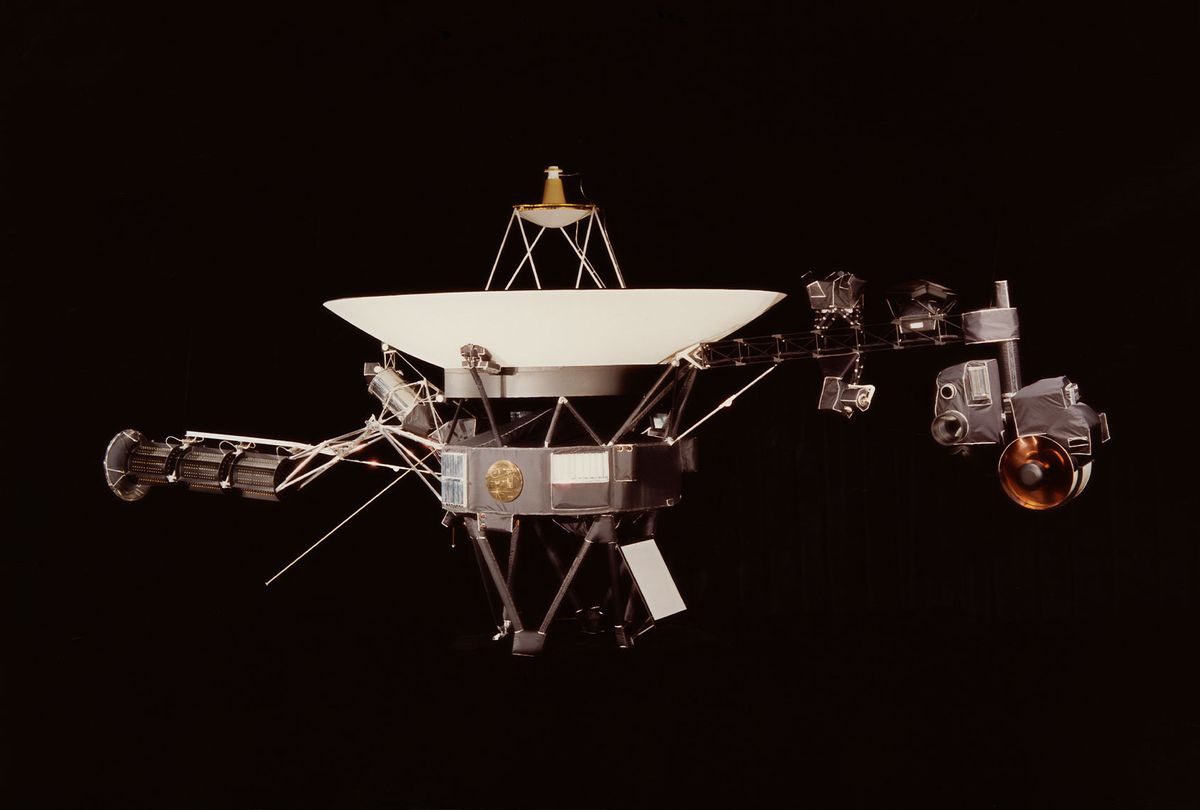On Sept. 5, 1977, NASA launched a space probe named Voyager 1 into the cosmos. Nearly 45 years later, much to the delighted astonishment of astronomers throughout the world, it is still humming along as it travels far past Pluto.
In fact, Voyager 1 has traveled so far that it has left the bounds of our solar system — and now it is giving off strange readings that scientists are struggling to understand.
The mystery likely has something to do with the fact that Voyager 1 is the farthest artificial object in space. At a distance of 14.5 billion miles away from Earth, Voyager 1 passed through the heliopause in 2012. The heliopause is the barrier separating the Sun's solar winds from the interstellar medium, or all of the matter and radiation that exist in the space in-between various solar systems in the galaxy. This means that Voyager 1 is literally in the interstellar void of the Milky Way.
Want more health and science stories in your inbox? Subscribe to Salon's weekly newsletter The Vulgar Scientist.
Perhaps that has something to do with why the Jimmy Carter-era machine is sending back signals that can best be described as strange.
"The interstellar explorer is operating normally, receiving and executing commands from Earth, along with gathering and returning science data," NASA explained on its website. "But readouts from the probe's attitude articulation and control system (AACS) don't reflect what's actually happening onboard."
"We're also in interstellar space – a high-radiation environment that no spacecraft have flown in before."
More specifically, NASA explained, the AACS keeps the spacecraft's antenna pointed at Earth so that it transmits data back to our planet. On the surface, the AACS appears to keep working, but all of the telemetry data that it has sent back is invalid, such as by appearing to be randomly generated or physically impossible. This raises questions.
"A mystery like this is sort of par for the course at this stage of the Voyager mission," Suzanne Dodd, project manager for Voyager 1 and 2 at NASA's Jet Propulsion Laboratory in Southern California, said in a statement. "The spacecraft are both almost 45 years old, which is far beyond what the mission planners anticipated."
Dodd added, "We're also in interstellar space – a high-radiation environment that no spacecraft have flown in before. So there are some big challenges for the engineering team. But I think if there's a way to solve this issue with the AACS, our team will find it."
RELATED: The Voyager 1 probe is now so far away that it can hear the background "hum" of interstellar space
This will not be a quick fix. A signal from Earth currently takes 20 hours and 33 minutes to reach Voyager 1, and vice-versa. Both Voyager 1 and its twin Voyager 2 are suffering from a dwindling power supply, forcing the engineers to turn off parts to save as much as they can. Some hope Voyager 1 will be able to continue to transmit data for as far into the future as 2025, after which point its radioisotope thermoelectric generators (RTGs) will no longer be able to summon enough energy to keep its equipment operative.
Even if Voyager 1 does prove to be on its last legs sooner than expected, it has still had a historic journey. As it flew by the gas giants of Jupiter and Saturn, as well as Saturn's largest moon Titan, it obtained detailed images and unprecedented quantities of data. The Voyager probe famously contains a so-called "Golden Record" (actually two phonograph records) that preserve Earth's culture to any extraterrestrial beings that may stumble upon and comprehend it. The gold-plated disks include everything from nature sounds to music by Wolfgang Amadeus Mozart and Chuck Berry.
Indeed, the Voyage 1 probe is now so deep into space that astronomers can literally hear the "hum" that our solar system produces as the spacecraft travels outside of it.
"It's very faint and monotone, because it is in a narrow frequency bandwidth," Stella Koch Ocker, a doctoral student in the Department of Astronomy and Cornell Center for Astrophysics and Planetary Science, told Salon at the time about the study of which she was lead author. "We're detecting the faint, persistent hum of interstellar gas."
A senior author — James Cordes, an astronomy professor at Cornell University — told Salon that "the interstellar medium is like a quiet or gentle rain. In the case of a solar outburst, it's like detecting a lightning burst in a thunderstorm and then it's back to a gentle rain."
Read more Salon articles on space exploration:



Shares